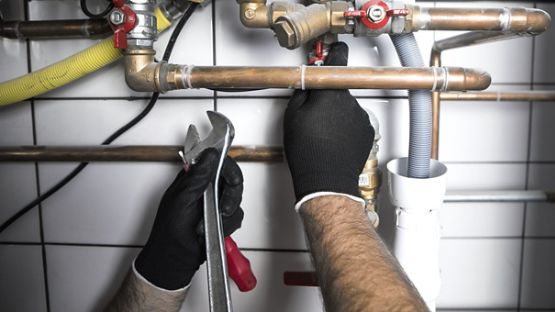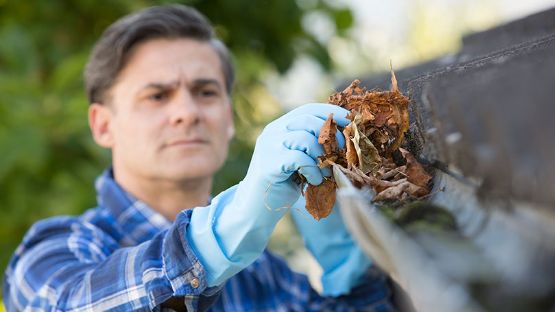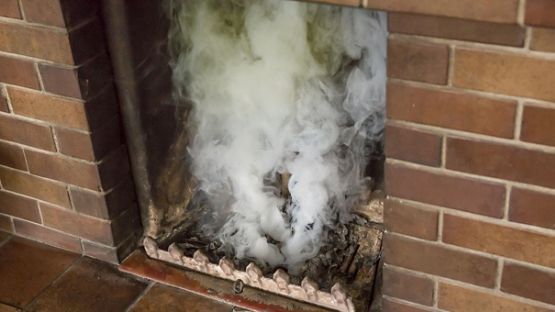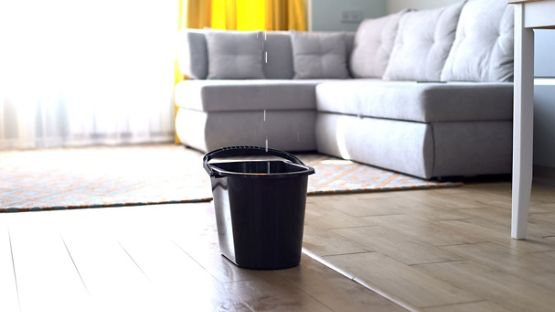As the leaves turn and cooler weather sets in, it’s time to prepare your home for the challenges of fall and winter. Completing a thorough fall maintenance checklist not only helps protect your property but can also save you from costly repairs and ensure a safe environment for you and your family.
This fall checklist will guide you through essential tasks to tackle before the first snowflakes fall.
Key takeaways
- Fall home maintenance helps to protect your home from potential damage during the colder months, ensuring both safety and longevity
- Check and seal your home’s exterior by caulking windows, inspecting chimneys and repairing any cracks or loose joints to prevent moisture and cold air from seeping in
- Prepare your heating systems by inspecting your fireplace, testing your HVAC, replacing your furnace filter and ensuring portable heating devices are clean and ready
- Tend to outdoor areas like your roof, gutters, driveway and deck to prevent issues like ice dams, mould and costly winter damage
Structural maintenance tips
Maintaining the structural integrity of your home is key as the weather changes. Fall is the perfect time to address issues that could lead to more severe problems if left unattended. Neglecting these tasks can result in drafts, leaks and potentially costly repairs. By staying on top of these tasks, you ensure that your home remains secure and comfortable through the colder months.
1. Caulk and seal windows, doors and small holes
Check for missing or damaged caulk around windows and doors. Proper sealing prevents drafts or air leaks and keeps your home energy-efficient. This simple task can make a big difference in managing heating bills and improving overall comfort.
Remember to inspect holes for electrical wiring, phone lines and gas lines. Properly sealing these areas helps prevent drafts and improves your home’s energy efficiency. This simple maintenance task can also significantly reduce heating bills and maintain overall comfort.
2. Inspect and repair any cracks in your foundation
Inspect your foundation for cracks that could worsen with the freeze-thaw cycle of fall and winter. Addressing these issues early can prevent more significant problems and protect your home’s structural integrity.
It’s important to use the appropriate materials and techniques for different types of cracks. Apart from tiny shrinkage cracks, serious cracks should be inspected by a professional contractor. It’s also important to reseal cracks regularly to maintain your repairs.
3. Insulate pipes to protect from freezing
Frozen pipes are a common winter hazard that can lead to costly water damage. To prevent this, insulate your home's exposed pipes, especially those in unheated areas like basements, attics and crawl spaces. Pipe insulation is an affordable and effective way to protect your plumbing from cold temperatures.
Before temperatures drop, drain your garden hoses and disconnect them from outdoor faucets.
4. Inspect your chimney
Schedule a chimney inspection to ensure it’s in good condition. Specifically, inspect brick chimneys for loose or broken joints. This helps prevent potential hazards and ensures safe operation during the colder months.
5. Inspect your roof and make repairs
Your roof is your home’s first line of defense against the elements. Heavy snowfall can lead to ice dams on your roof, which can cause water to seep into your home and damage your ceilings and walls. Look for loose or broken shingles and have a professional repair any issues before winter hits.
Fall heating maintenance
Your heating system works hard during the colder months, so it’s important to keep it in tip-top shape. Regular maintenance helps avoid unexpected breakdowns and ensures your home stays warm and safe. Addressing issues early can also help you avoid higher heating bills and maintain a comfortable living environment.
6. Inspect your fireplace
If you have a wood-burning fireplace, ensure it’s free from blockages and inspect brick chimneys for any issues. Arrange for a professional cleaning to ensure safe operation and prevent potential hazards from toxic gas.
7. Maintain and test your HVAC systems
Regular maintenance of your heating system should be a priority. Replace the furnace filter to keep your system running efficiently. Also, clean your air vent and check for any trapped air in the system. Don’t forget to schedule a tune-up with a professional to prepare your system for the cold months ahead.
Take care of portable HVAC units
Portable HVAC units, including space heaters and air conditioners, need proper care to ensure they operate efficiently when needed. Taking the time to maintain these units now can prevent breakdowns and ensure you stay comfortable throughout the winter season.
8. Clean your space heaters
Before using space heaters, ensure they’re clean and in good working order. Regular maintenance helps prevent fires and ensures efficient operation. When in use, ensure space heaters are never left unattended to reduce the risk of fires.
9. Set up your humidifier
As indoor air can become dry during the winter, setting up a humidifier helps maintain comfortable humidity levels.
10. Disconnect portable A/C units
If you use portable A/C units in the summer months, now's a good time to disconnect and drain them. Clean any of the vents of dust and debris, and store any portable air conditioning units to protect them from winter damage.
Garden and home exterior
Preparing your garden and outdoor spaces for fall can prevent damage and make maintenance easier throughout the winter. Proper upkeep ensures your home’s exterior remains in good condition and reduces the risk of costly repairs (or even injuries) caused by weather-related issues.
11. Check your gutters and downspouts
Before the first snowfall, it's important to have your gutters and downspouts cleaned out. Remove any leaves, twigs and other debris that may have accumulated during the fall. This simple maintenance task ensures that your gutters can effectively channel water away from your home, preventing ice buildup and the associated risks.
To further protect your home from water damage, consider having gutter extensions installed. These devices help direct water further away from your home's foundation, reducing the risk of water seepage and soil erosion. By extending the reach of your gutters, you can prevent water from pooling near your foundation, which is particularly important during winter when snowmelt can create excess runoff and potential basement flooding.
12. Inspect and seal your deck
Your deck is constantly exposed to the elements. Without proper care, it can suffer from wear and tear, especially as the weather changes. Fall is a great time to check for signs of damage like rotting wood, loose or broken joints and cracked boards.
Once inspected, apply a weather-resistant sealant to protect the wood from moisture, which can cause long-term issues during cold weather. Sealing your deck not only extends its lifespan but also ensures it's ready to withstand the harsh winter months ahead.
13. Clean up your driveway and sidewalks
Your driveway and sidewalk are exposed to the elements year-round, with leaves, dirt and grime building up, especially during the fall. Regular cleaning not only keeps these areas looking tidy but also helps prevent mould, mildew and uneven or slippery surfaces that can become more dangerous in cold weather.
Consider power-washing to remove deep-seated dirt and stains, giving your driveway a fresh start before winter hits. While cleaning, check for cracks or loose or broken joints, as water can seep in and freeze, leading to potholes and costly repairs.
14. Tidy up your garden and think ahead to spring
Properly putting your garden ‘to bed’ will set you up for an optimal spring garden. Prepare your garden for winter by cutting and aerating your lawn and raking up leaves. These tasks help your lawn recover come spring.
Prune back dead plants and apply mulch to protect your garden beds over the winter months. While you’re at it, consider planting spring bulbs now to ensure you have a cheerful display on the other side of winter. Don’t forget: non-hardy plants and containers will need to be brought indoors or protected for the winter.
Home safety and emergency preparedness
Ensuring your home is safe from potential hazards is essential, especially as you start using heating systems more frequently. Regular safety checks can prevent accidents and ensure your home remains a safe environment for your family.
15. Check your smoke detectors and carbon monoxide detectors
Test and replace batteries in your smoke detectors to ensure they are functioning correctly. This simple step is important for your safety.
Also, ensure your carbon monoxide detectors are operational. This is vital as your heating system is used more during the colder months.
16. Review emergency plans
Review and update your emergency plans to ensure you and your family are prepared for emergencies. This includes having a grab-and-go bag and knowing what to do in case of an evacuation.
17. Stock up on cold weather supplies
Preparing for the colder months means more than just bundling up. It’s about ensuring you have everything you need to tackle snow, ice and the unexpected. Stock up on essentials like salt, sand and snow shovels to keep your walkways and driveway safe during icy conditions.
If you live in a remote area where travel can become restricted, it’s important to go a step further. Make sure you have extra food provisions, candles, flashlights and batteries in case of power outages or extended periods of isolation. Being well-prepared helps avoid scrambling for supplies when winter weather strikes.
Some final maintenance areas to consider
We're all familiar with the idea of a 'spring clean,' but what about a 'fall clean'? Fall is also a great time to tackle indoor tasks that improve your home’s overall environment. Completing these tasks can enhance comfort, safety and efficiency as you spend more time indoors during the colder months.
18. Tidy up inside
As fall ushers in cooler weather, it’s a great time to refresh your home’s interior and prepare for the months ahead. Deep cleaning now (dusting, vacuuming and wiping down baseboards) helps reduce allergens and keeps your home feeling fresh as you spend more time indoors.
This is also the perfect opportunity to clean windows, swap out lighter summer linens for cosy fall bedding and declutter any areas that may have gathered unwanted items. If your home is feeling cluttered, consider donating old clothes or items you no longer need. With a little organization, you’ll be ready for the season's festivities and long indoor stretches.
19. Update your home inventory
Now is a great time to update your home inventory. This ensures your insurance coverage accurately reflects your belongings and can help in the event of a claim.
Home insurance considerations
A well-maintained home not only reduces the risk of damage but can also impact your home insurance coverage. Regular maintenance helps prevent issues that could lead to claims and ensures you’re adequately covered.
Check your policy inclusions and exclusions
Start by carefully reviewing your current home insurance policy. Pay special attention to the inclusions and exclusions related to winter weather events. Understanding these details will give you a clearer picture of what you can expect in the event of a winter-related claim.
Consider add-ons for additional protection
Depending on your location and the specific risks you face, consider adding endorsements to your policy. For example, additional water protection that covers sewer backup and overland water may be worth considering.
Know your coverage limits
It's also important to be aware of your policy's deductibles and coverage limits. Use your home inventory to help determine if your belongings are underinsured. If your current coverage limits seem insufficient, now might be the time to contact your insurance representative to increase them.













